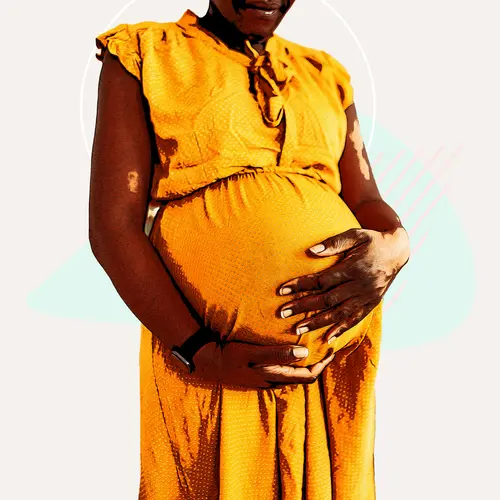Aug. 24, 2023 – One in five women report mistreatment from medical professionals during pregnancy and childbirth – an issue people of color face at even higher rates, according to a survey released Tuesday by the CDC.
The new CDC Vital Signs report comes from a survey of 2,400 women who were asked about the medical care they received during their most recent pregnancies. Thirty percent of the Black women surveyed reported mistreatment, as did 29% of the Hispanic women, 27% of the multiracial women, 18% of the White women, 20% of the American Indian/Native Hawaiian/Pacific Islander/Alaska Native women, and 15% of the Asian women.
“I've had thousands of experiences and opportunities to witness the care of mothers during the pregnancy, delivery, and postpartum. Not all of that care was respectful,” said the CDC’s Wanda Barfield, MD, during a media call Tuesday. “As a mother and as a Black woman, I was fortunate to have an OB/GYN who saved my life and the life of my son, because he respectfully listened to my concerns while I was pregnant.”
“Yet this report provides evidence that many women are having experiences that are truly unacceptable," she said.
Mistreatment outlined in the report includes being shouted at or scolded, dismissed and unanswered requests for help, threats to withhold treatment, and infringement of physical privacy. The CDC analyzed data from the Porter Novelli View Moms survey that took place from April 24 to April 30 this year.
Survey respondents also reported discrimination based on medical insurance status. Twenty-eight percent of women without insurance and 26% with public insurance said they were received inadequate care, while 16% with private insurance reported the same.
“Overall, the most common reasons for reported discrimination were age, weight, and income, with the most common reason varying by race and ethnicity,” said Barfield, director of the CDC's Division of Reproductive Health at the National Center for Chronic Disease Prevention and Health Promotion.
According to the report, the survey represents a small piece of a much larger problem – U.S. maternal death rates that dwarf those of other high-income countries. These deaths have been on the rise since 2018, according to the CDC, and in 2021, the mortality rate was 32.9 deaths per 100,000 live births, up from 23.8 in 2020 and 20.1 in 2019. In 2021, the maternal mortality rate for Black women was 69.9 deaths per 100,000 live births.
The CDC's own Shalon Irving, PhD, a renowned epidemiologist, died in 2017 from complications of high blood pressure 3 weeks after giving birth to her daughter. Irving, who was Black, had been dismissed by doctors when she insisted something wasn’t right.
The report’s findings come as no surprise, given that the United States lags in maternity accommodations, compared to other developed countries, said Catherine Cansino, MD, a clinical professor of obstetrics and gynecology with UC Davis Health.
The average paid maternity leave globally is 29 weeks, according to data from the World Policy Analysis Center. In the U.S., there is no federal law that requires any amount of paid parental leave.
Most new mothers in developed countries receive at least half of their salary during maternity leave, according to a December 2022 report by the Organization for Economic Cooperation and Development (OECD).
“In general, in our society, our voices aren't necessarily heard as firmly and we have to advocate for ourselves,” Cansino said. “Women and people of color, and especially people who identify in that intersectionality, it's going to be very hard to navigate.”
The report outlines several measures that could improve patient maternity care, including hiring providers with ethnic and racial backgrounds that mirror the patient population, the use of doula and midwifery care, and more training for doctors and nurses.
“As a health care community, we have to do better in providing unbiased and respectful maternity care equally to all mothers,” CDC Chief Medical Officer Deborah Houry, MD, said during the Tuesday phone briefing. “We know that actions like hiring and retaining a diverse workforce and providing health care provider trainings on unconscious bias and stigma can help improve the quality of care.”
D’Angela Pitts, MD, director of maternal health equity at Henry Ford Health in Detroit, said even the most subtle changes in doctor-patient interactions can make a big difference. For example, she encourages residents to ask patients and those with them: “What questions do you have?” rather than, “Do you have any questions?” This prevents patients from staying quiet despite having concerns – something that nearly half (45%) of survey respondents reported doing.
Pitts said that it also is important for health care professionals to point out mistreatment when they see it.
“We have to hold each other accountable as providers,” she said. “If you hear a colleague say something, speak up and say, ‘I think I would have done that a different way.’”

